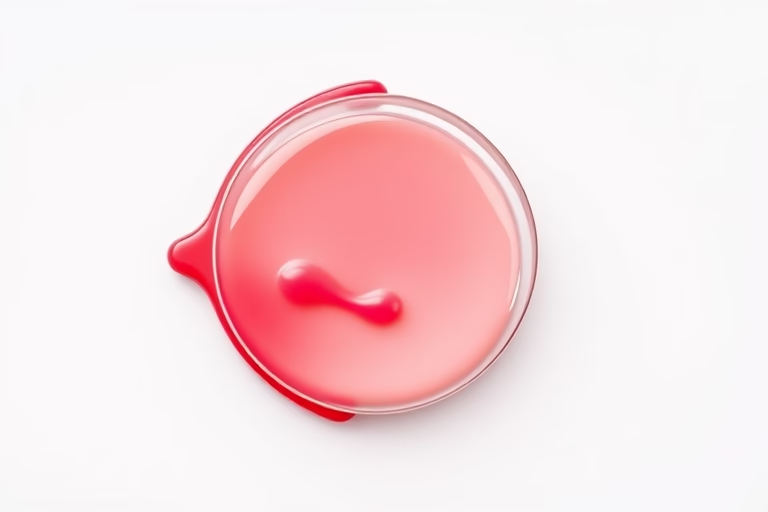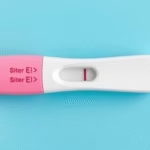We will be talking about ovulation bleeding vs implantation bleeding. Both phenomena are natural processes that can occur during a woman’s menstrual cycle, and understanding the differences between the two can be essential for reproductive health.
Ovulation bleeding refers to light spotting or bleeding that can occur when an ovary releases an egg. This typically happens midway through the menstrual cycle. It is considered a common occurrence and may last only a few hours to a couple of days. In contrast, implantation bleeding occurs when a fertilized egg attaches itself to the uterine lining. This usually happens about a week after ovulation and may indicate early pregnancy. The bleeding associated with implantation is often light pink or brown and lasts only a few hours to a few days.
1. What is Ovulation Bleeding?
Ovulation bleeding, also known as ovulatory spotting, occurs at the time of ovulation. It is often characterized by light spotting that occurs between menstrual periods. This type of bleeding is generally harmless and could be a sign that your body is functioning as it should.
Some women notice a small amount of discharge that could be mistaken for menstrual bleeding. Ovulation bleeding can sometimes be accompanied by other symptoms, such as mild cramping or changes in cervical mucus, as hormone levels fluctuate throughout the menstrual cycle.
This bleeding is usually short-lived – lasting a few hours to a couple of days. It may be a normal occurrence and is typically not a cause for concern.
2. What is Implantation Bleeding?
Implantation bleeding occurs when a fertilized egg (zygote) attaches to the lining of the uterus, often about six to twelve days after conception. This small amount of blood can be a sign that pregnancy has occurred but can also be mistaken for a light menstrual period.
Unlike ovulation bleeding, implantation bleeding usually occurs about a week before your expected menstrual period. The color of the blood is often lighter, typically being pinkish or brown rather than the bright red associated with a normal menstrual period.
Implantation bleeding may last a few hours to a few days and can be an early sign of pregnancy, making it an important indicator for those trying to conceive.
3. Key Differences between Ovulation Bleeding and Implantation Bleeding
The primary difference lies in timing, color, and duration. Ovulation bleeding occurs in the middle of your cycle around ovulation, while implantation bleeding happens after conception, closer to the expected date of a menstrual period. The blood from ovulation may be bright red and lasts only a short period, whereas implantation bleeding is typically light pink or brown and may last longer.
4. Symptoms Accompanying Ovulation Bleeding
Women may experience mild cramps, a change in cervical mucus, or breast tenderness during ovulation. These symptoms are generally mild but can help indicate that ovulation is occurring. Be aware that these symptoms can also indicate other conditions; it’s always a good idea to consult with a healthcare provider if you’re concerned.
5. Symptoms Accompanying Implantation Bleeding
Implantation bleeding is usually earthy in nature. Accompanying symptoms might include some mild cramping, breast tenderness, and mood swings due to hormonal changes. Some women also report increased urination or nausea as other early pregnancy signs. It’s essential to track these symptoms, as they can help clarify whether one might be pregnant.
6. When Should You See a Doctor?
If bleeding occurs outside of the expected timeline of your cycle, whether it is heavy or accompanied by severe pain, it’s advisable to see a doctor. While both ovulation and implantation bleeding are typically normal, any sudden changes or severe symptoms warrant medical attention. Early pregnancy complications can sometimes present as bleeding, so it’s wise to err on the side of caution.
7. How to Differentiate between the Two?
To differentiate between ovulation bleeding and implantation bleeding, women should pay attention to the timing and characteristics of the bleeding. Keeping a menstrual diary can help track cycles and any unusual bleeding. If the bleeding occurs mid-cycle, it’s likely ovulation. If it occurs later and is accompanied by pregnancy symptoms, it may be implantation bleeding.
8. The Role of Hormones in Ovulation and Implantation
Hormones play a significant role in both processes. Luteinizing hormone (LH) surges to trigger ovulation, while progesterone levels rise after ovulation to prepare the uterine lining for a potential pregnancy. If implantation occurs, hormone levels will continue to change to support the developing pregnancy. Understanding these hormones can provide insight into what the body undergoes during these critical phases.
9. Psychological Considerations
The anticipation surrounding implantation bleeding can cause significant emotional responses for women trying to conceive. Understanding the physiological differences can help manage expectations and mental health. Education and open communication with partners about emotions during this time are important facets of mental well-being.
10. Natural Remedies and Care
While menstrual cycle-related bleeding is typically not a cause for concern, maintaining a healthy lifestyle can aid overall reproductive health. A balanced diet, regular exercise, and stress management techniques such as yoga or meditation may support hormone balance and menstrual regularity. These practices provide both emotional and physical well-being, which can be beneficial when navigating cyclical changes in the body.
In summary, the terms ovulation bleeding and implantation bleeding both relate to important stages of a woman’s reproductive cycle. Recognizing the differences can be crucial for understanding one’s cycle, tracking fertility, and anticipating pregnancy. Monitoring symptoms and conditions effectively can help provide clarity on reproductive health.
Conclusion
Understanding the difference between ovulation bleeding and implantation bleeding is essential for managing reproductive health. Ovulation bleeding is a normal, often harmless occurrence during the ovulation phase of the menstrual cycle, characterized by light spotting around the midpoint of the cycle. In contrast, implantation bleeding serves as a possible early indicator of pregnancy, occurring later after conception has taken place.
Women should pay attention to the color, duration, and timing of the bleeding to differentiate the two. Keeping track of one’s menstrual cycle can aid in recognizing patterns and detecting any anomalies. This knowledge is empowering and can help in making informed decisions regarding fertility and health.
It is also important to seek medical advice if any irregularities in bleeding occur, particularly if they’re unexpected or accompanied by severe symptoms. Being proactive in managing one’s health can lead to better outcomes and a deeper understanding of one’s body.
In summary, whether you are trying to conceive or simply want to understand your cycle better, knowledge about ovulation and implantation bleeding can help you navigate your menstrual health journey effectively.
Frequently Asked Questions
Q1: Is ovulation bleeding common?
A1: Yes, ovulation bleeding is relatively common and occurs in many women during their reproductive years.
Q2: How long does implantation bleeding last?
A2: Implantation bleeding typically lasts a few hours to a few days.
Q3: Can ovulation bleeding be heavy?
A3: No, ovulation bleeding is generally light spotting and should not be heavy.
Q4: Does implantation bleeding always indicate pregnancy?
A4: Implantation bleeding can be a sign of pregnancy, but not all bleeding indicates pregnancy, so further testing is recommended.
Q5: Should I see a doctor if I experience unusual bleeding?
A5: Yes, any unusual bleeding or changes in your menstrual cycle should be discussed with a healthcare provider.
Further Reading
What Type of Psychotherapy Is Best for Anxiety?







